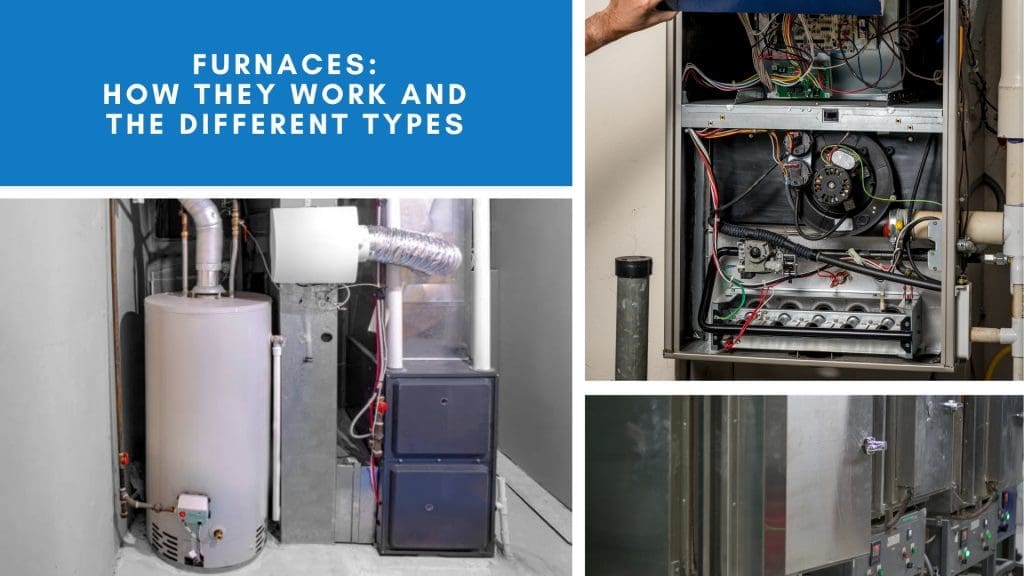En la agitada vida de Los Ángeles, donde la temperatura a menudo sube, tener plantas purificadoras de aire En casa puede ofrecer un oasis refrescante. Estas plantas no solo embellecen tu espacio, sino que también mejoran calidad del aire, actuando como filtros de aire naturales. Sin embargo, saber cómo cuidarlos... plantas purificadoras de aire Durante el calor sofocante se requieren ciertos conocimientos. Con el aumento de las temperaturas, mantener la salud de estas plantas puede ser un desafío, pero con las estrategias adecuadas, puedes asegurar que sigan prosperando.
Esta guía le guiará a través de los pasos para garantizar su plantas purificadoras de aire prosperan incluso en los días más calurosos. Como un experimentado Climatización Como profesional, le ofrezco estas ideas con un toque de experiencia local y un enfoque en la satisfacción del cliente. Siguiendo estos consejos, puede transformar su hogar en un remanso de paz, incluso en pleno calor del verano, manteniendo sus plantas sanas y vibrantes.

Las plantas purificadoras de aire se han vuelto populares debido a su capacidad para limpiar el aire de toxinas y mejorar calidad del aire interiorActúan como purificadores de aire naturales, absorbiendo contaminantes y liberando oxígeno, lo que puede mejorar significativamente el ambiente de cualquier habitación. Algunas de las mejores plantas de interior para un aire limpio incluyen:
- Planta araña: conocida por eliminar contaminantes como el formaldehído y el xileno, la planta araña es fácil de cuidar y muy eficaz.
- Lirio de la paz: excelente para filtrar sustancias químicas nocivas como amoníaco, benceno y formaldehído, lo que lo convierte en un potente purificador de aire.
- Helecho de Boston: es muy eficaz para eliminar contaminantes, especialmente formaldehído, y también agrega una estética verde y exuberante a su espacio.
- Planta de serpiente: una de las mejores plantas de interior para obtener oxígeno y aire limpio, la planta de serpiente también es conocida por su resistencia y sus bajas necesidades de mantenimiento.
La NASA incluso recomienda tener una planta por cada 9 metros cuadrados para una purificación óptima del aire, lo que las convierte en un elemento indispensable en cualquier hogar u oficina. Son más que simples elementos decorativos; son fundamentales para crear un entorno de vida más saludable, contribuyendo a un mayor bienestar y productividad.
Desafíos del mantenimiento de plantas purificadoras de aire en condiciones de calor
El calor puede suponer varios desafíos para mantener sanas las plantas purificadoras de aire. Las altas temperaturas y el aire seco pueden provocar diversos problemas que, si no se abordan, pueden dificultar el desarrollo de las plantas:
- Deshidratación: Las plantas pierden humedad rápidamente, especialmente bajo la luz solar directa, lo que puede provocar marchitamiento y estrés. Es fundamental asegurar que tengan suficiente agua sin regar en exceso.
- Marchitez: Las hojas pueden marchitarse o volverse marrones debido al calor excesivo y la falta de agua, lo que afecta la apariencia y la salud general de la planta.
- Infestaciones de plagas: El calor puede atraer plagas que dañan las plantas, como ácaros y pulgones, que prosperan en condiciones cálidas y secas.
Abordar estos desafíos garantiza que sus plantas sigan prosperando y purificando el aire eficazmente. Al ser proactivo y atento a las necesidades de sus plantas, puede mitigar estos problemas y mantener un jardín interior saludable durante todo el verano.
Consejos para cuidar tus plantas durante el clima cálido

1. Riego adecuado
Durante el calor, tus plantas necesitarán más agua de lo habitual. Sin embargo, regar en exceso puede ser tan perjudicial como regar de menos. Aquí te explicamos cómo encontrar el equilibrio adecuado:
- Revisa la humedad del suelo: Usa el dedo para comprobar el nivel de humedad del suelo. Riega las plantas cuando la primera pulgada del suelo esté seca. Este sencillo paso evita el riego excesivo, que puede provocar la pudrición de las raíces.
- Riego temprano o tardío: Riega tus plantas temprano por la mañana o tarde por la noche para minimizar la evaporación. Esto asegura que el agua llegue a las raíces, donde más se necesita.
- Programa de riego constante: Mantenga un programa de riego constante para evitar el estrés. Un riego irregular puede provocar fluctuaciones en la salud de las plantas, haciéndolas más vulnerables al calor.
2. Colóquese sabiamente
La ubicación de tus plantas puede afectar en gran medida su salud durante las olas de calor:
- Evite la luz solar directa: Aleje las plantas de la luz solar directa para evitar que las hojas se quemen. La exposición directa a la luz solar intensa puede dañar las hojas y retrasar su crecimiento.
- Use cortinas transparentes: Si no puede moverlas, use cortinas transparentes para difuminar la luz solar intensa. Esto crea un ambiente de luz más suave, más propicio para la salud de las plantas.
- Agrupar plantas: Agrupar plantas puede crear un microclima con mayor humedad, beneficioso durante las sequías. Esto no solo ayuda a retener la humedad, sino que también mejora su resiliencia general.
3. Aumentar la humedad
Muchas plantas purificadoras de aire prosperan en condiciones de humedad. Para aumentar la humedad:
- Rocíe las hojas: Rocíe ligeramente las hojas con agua para simular un ambiente húmedo. Esta sencilla acción puede proporcionar la humedad necesaria, especialmente para las plantas tropicales.
- Use un humidificador: un humidificador puede mantener un nivel de humedad estable en el aire, lo que beneficia tanto a sus plantas como a su comodidad.
- Colocar sobre una bandeja con guijarros: Coloca las plantas sobre una bandeja llena de guijarros y agua para aumentar la humedad de forma natural a medida que el agua se evapora. Este método es eficaz y fácil de implementar.
4. Mantenimiento regular
El mantenimiento regular es clave para mantener sus plantas saludables:
- Poda de hojas muertas: Elimina las hojas muertas o amarillentas para estimular el crecimiento de nuevas. La poda mantiene sus plantas en óptimas condiciones y previene la propagación de enfermedades.
- Control de plagas: Inspeccione regularmente para detectar plagas y trate cualquier infestación de inmediato. La detección temprana es crucial para controlar las plagas antes de que se agraven.
- Fertilice con moderación: Use un fertilizante equilibrado, pero no fertilice en exceso durante el calor, ya que puede estresar a las plantas. Demasiado fertilizante puede provocar quemaduras por nutrientes y un crecimiento débil.
Mejores prácticas para el cuidado de plantas de interior

por Jason Leung (https://unsplash.com/@ninjason)
Cuidar plantas purificadoras de aire no se trata solo de sobrevivir al calor. Implementar las mejores prácticas garantiza su salud y vitalidad a largo plazo, creando un jardín interior próspero.
Elige las plantas adecuadas
Elija plantas que se adapten a su entorno. Algunas plantas, como la Planta de serpiente y la Planta ZZ, toleran mejor el descuido y la sequía. Seleccionar las plantas adecuadas garantiza que prosperen con mínima intervención y se adapten a las condiciones específicas de su hogar.
Monitorizar la exposición a la luz
Cada planta tiene necesidades de luz diferentes. Monitorea y ajusta su exposición según corresponda para que prosperen. Comprender estas necesidades ayuda a ubicarlas en el lugar adecuado, ya sea que requieran luz brillante e indirecta o que toleren condiciones de poca luz.
Rota tus plantas
Gire las plantas ocasionalmente para que todos sus lados reciban la misma exposición a la luz. Esto promueve un crecimiento uniforme y evita que se inclinen. La rotación regular ayuda a mantener una forma equilibrada y garantiza que todas las partes de la planta reciban suficiente luz solar.
Beneficios de las plantas purificadoras de aire
Tener plantas purificadoras de aire no es solo una cuestión estética. Estas plantas ofrecen numerosos beneficios para la salud que van más allá de su atractivo visual:
- Mejorado Calidad del aire:Filtran toxinas y aumentan los niveles de oxígeno, contribuyendo a un ambiente interior más saludable.
- Mejora el estado de ánimo y la productividad: Las plantas crean un ambiente tranquilo que mejora el estado de ánimo y la productividad. Su presencia puede reducir el estrés y fomentar un ambiente más positivo.
- Humidificadores naturales: Liberan humedad en el aire, mejorando los niveles de humedad de forma natural. Esto es especialmente beneficioso en climas secos, ya que favorece la comodidad respiratoria y la salud de la piel.
Cuándo llamar a un profesional
Si bien cuidar las plantas puede ser una tarea gratificante, a veces se necesita ayuda profesional, especialmente cuando se trata de Sistemas HVAC que afectan el clima interior:
- Problemas persistentes de las plantas: si sus plantas continúan teniendo problemas a pesar de sus mejores esfuerzos, puede que sea el momento de consultar a un especialista para diagnosticar problemas subyacentes.
- Climatización Preocupaciones: Si su Climatización Si el sistema no mantiene las condiciones óptimas para sus plantas, es posible que necesite mantenimiento. Climatización Un profesional puede garantizar que su sistema favorezca un entorno saludable tanto para usted como para sus plantas.
No dude en comunicarse con LC Heating y Aire acondicionado Para obtener asesoramiento profesional y servicios a la medida de sus necesidades. Visite nuestra página web. lahvaclc.com O llámenos al (818)858-7080. Estamos aquí para garantizar que su hogar sea lo más cómodo y saludable posible.
Conclusión: Cómo cuidar las plantas purificadoras de aire
Cuidar las plantas purificadoras de aire durante el calor requiere atención al detalle y un cuidado especial. Al comprender sus necesidades y adaptar su rutina de cuidado, podrá disfrutar de los beneficios de un aire más limpio y un espacio habitable más agradable. Estas medidas no solo protegen sus plantas durante los meses más calurosos, sino que también mejoran el ambiente general de su hogar.
Recuerda, estoy aquí para ayudarte con cualquier pregunta que tengas sobre cómo mantener un ambiente saludable en casa. Confía en la calidad y hagamos de tu hogar un remanso de confort y frescura. Con un poco de conocimiento y esfuerzo, tus plantas purificadoras de aire pueden prosperar, brindándote beneficios de belleza y salud todo el año.


